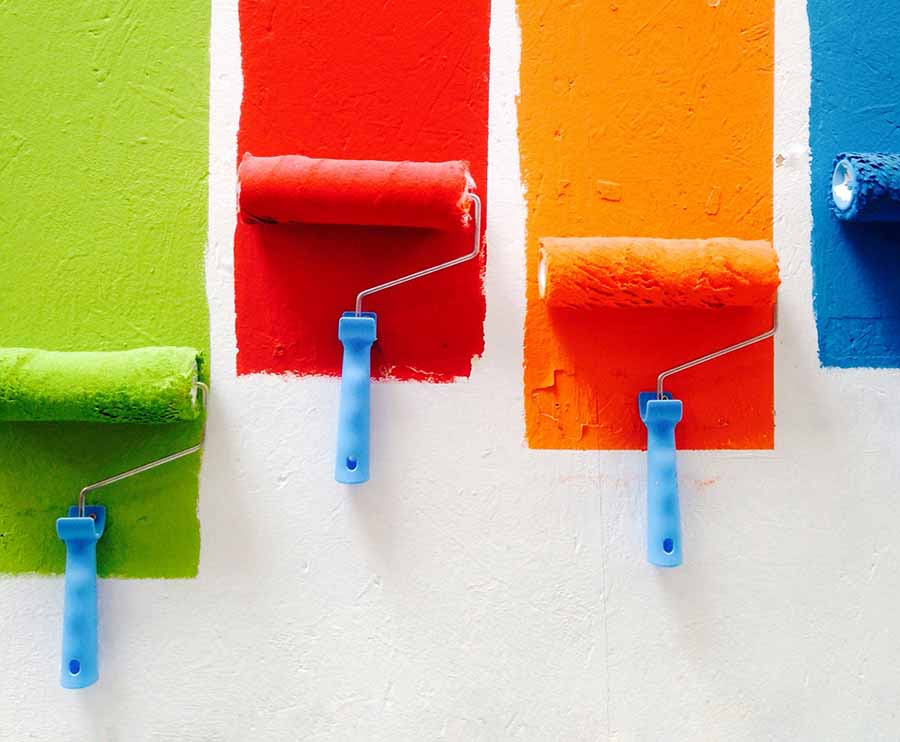Updating cabinets with a fresh coat of paint can transform the entire look and feel of a kitchen or bathroom. Whether you’re aiming for a modern, sleek finish or a rustic, country charm, painting cabinets is a cost-effective way to breathe new life into your space. But just how hard is it to paint cabinets? Let’s delve into the process and challenges involved.
Assessing the Task Ahead
Before diving into a cabinet-painting project, it’s crucial to assess the condition of your cabinets. Are they made of wood, laminate, or metal? Are there any damages or imperfections that need to be addressed before painting?

Understanding the material and condition of your cabinets will help you determine the level of preparation required.
The Prep Work
One of the most crucial aspects of cabinet painting is thorough preparation. This typically involves:
- Cleaning: Cabinets accumulate grease, grime, and dirt over time. A thorough cleaning with a degreaser or a mixture of dish soap and water is essential to remove any buildup and ensure proper adhesion of the paint.
- Sanding: Sanding the cabinets creates a smooth surface for the paint to adhere to. It also helps remove any existing finish or gloss, promoting better paint adhesion. While this step can be time-consuming, it’s essential for achieving a professional-looking finish.
- Priming: Applying a primer is essential, especially if you’re painting over a dark or glossy surface. Primer helps seal the surface, prevents stains from bleeding through, and improves paint adhesion.
- Taping and Protecting: Properly taping off areas you don’t want to paint and protecting surrounding surfaces from drips and spills is crucial to maintaining a clean workspace and achieving a polished outcome.
Choosing the Right Paint and Tools
Selecting the appropriate paint and tools can significantly impact the outcome of your cabinet-painting project. Consider the following factors:
- Paint Type: For cabinets, it’s best to use a high-quality, durable paint that can withstand daily wear and tear. Acrylic latex paints or alkyd-based paints are popular choices for their durability and ease of application.
- Finish: The finish you choose will affect the final look of your cabinets. Satin and semi-gloss finishes are popular for cabinets as they are easy to clean and provide a subtle sheen without being too glossy.
- Tools: Invest in high-quality brushes and rollers specifically designed for painting cabinets. A good quality brush will help you achieve smooth, even coverage and minimize brush marks.
The Painting Process
Once you’ve completed the prep work and gathered your materials, it’s time to start painting. Here’s a basic overview of the painting process:
- Apply the Paint: Start by applying a thin, even coat of paint to the cabinets using smooth, overlapping strokes. Work in small sections, ensuring thorough coverage without drips or runs.
- Allow for Drying Time: Allow the first coat of paint to dry completely before applying additional coats. Depending on the type of paint you’re using, this may take anywhere from a few hours to overnight.
- Sand Between Coats: Lightly sand the cabinets between coats to remove any imperfections and promote adhesion. Wipe away any dust with a tack cloth before applying the next coat of paint.
- Apply Additional Coats: Depending on the desired coverage and finish, you may need to apply multiple coats of paint. Aim for smooth, even coverage with each coat.
- Finish with a Protective Coat: Once the final coat of paint has dried, consider applying a clear topcoat for added durability and protection against scratches and stains.
Challenges and Considerations
While painting cabinets is certainly achievable for the average DIY enthusiast, it’s not without its challenges. Some common issues to watch out for include:
- Drips and Runs: Applying paint too thickly can result in drips and runs, leading to an uneven finish.
- Brush Marks: Improper brushing technique or using low-quality brushes can leave behind visible brush marks on the cabinets.
- Drying Time: Waiting for paint to dry between coats can be time-consuming, requiring patience and careful planning.
- Durability: Choosing the right paint and applying a durable topcoat are essential for ensuring that your newly painted cabinets can withstand daily use and cleaning.
Painting cabinets can be a rewarding DIY project that can dramatically transform the look of your space. While it does require time, patience, and attention to detail, the end result is well worth the effort. By properly preparing the cabinets, choosing the right paint and tools, and following a systematic painting process, you can achieve professional-looking results that will breathe new life into your kitchen or bathroom. So, roll up your sleeves, grab your paintbrush, and get ready to tackle those cabinets!
